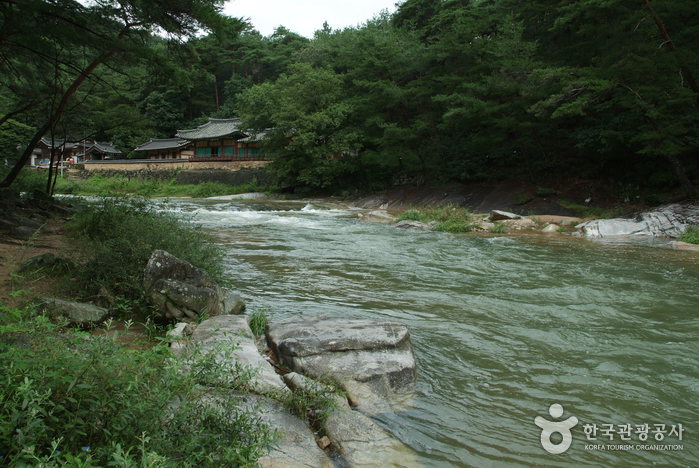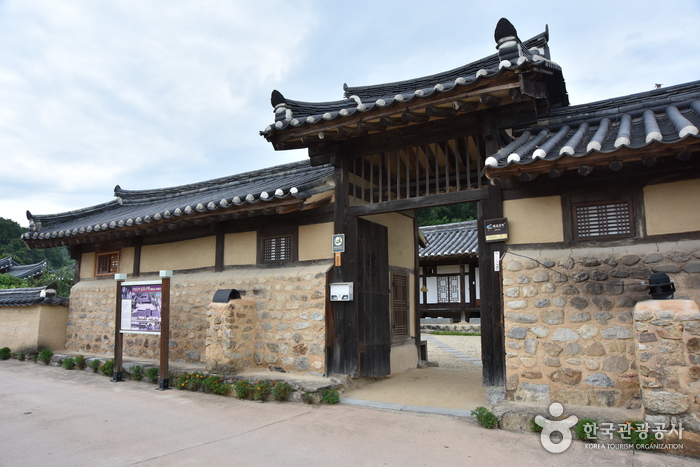Vallée Seokcheon (석천계곡)
18.9Km 2021-05-17
Samgye-ri, Bonghwa-eup, Bonghwa-gun, Gyeongsangbuk-do
+82-54-679-6334
La vallée Seokcheon recoit les eaux en provenance de la montagne Taebaek, située à Bonghwa-gun dans la province de Gyeongsangbuk-do. La vallée est large, peu profonde, et entourée d'épaisses forêts de pins. Des rochers plats sont dispersées à travers la vallée, ce qui fait endroit idéal pour jouer avec les enfants. A côté de la vallée, vous trouverez également le pavillon Seokcheonjeong, qui fut construit en 1535 (période de Joseon). Ce pavillon est fait de pins rouges appelés Chunyangmok et construit sur un socle en pierre ; il offre une vue panoramique magnifique sur la montagne.
The Namho house / 남호구택
19.9Km 2025-08-12
21, Baraemi-gil, Bonghwa-gun, Gyeongsangbuk-do
+82-54-673-2257
Located in Bonghwa-eup, Bonghwa-gun, Gyeongsangbuk-do, Bonghwa Namho Gutaek is an old house from the Chosun period designated as Cultural Property Material No. 385. It was built by Nongsan Kim Nam Yeong in 1876 and his son Namho Kim Roe Sik had lived there. Mr. Kim Roe Sik was awarded with a medal for contributing his entire asset to military fund for the Provisional Government of Korea. The spirit of putting others and his country before himself continues until now. Having been built with high-quality materials, the 140-year old Namho Gutaek has barely suffered any deformation. In addition, attentive care added by the descendants has kept the traditional beauty of the hanok intact. One may even feel reverence at the Sosel Daemun (gate). In harmony with the hanok, the garden in the yard and the flower bed sitting next to the wall change color as season changes. It is a great place to feel the scent of old trees and get some rest. In 2016, the shared toilet was renovated in modern style to alleviate any inconvenience for the guests. In the spacious yard, there’s a spot for traditional games such as Tuho, Jegichagi, Neoltuigi, etc. Bonghwa Station (Yeongdong Line) is about a 15- minute walk away; an inner city bus stop in the town, on the other hand, makes a trip to other regions easy.


 Français
Français
 한국어
한국어 English
English 日本語
日本語 中文(简体)
中文(简体) Deutsch
Deutsch Español
Español Русский
Русский